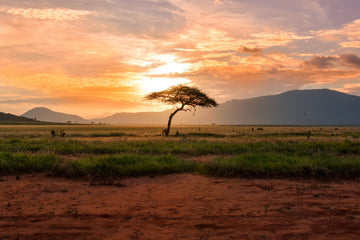Costa Rica Uncovered: Culture and Coffee
Welcome to our exploration of Costa Rica, a gem of Central America known for its rich biodiversity, stunning natural beauty, and thriving coffee industry. In this profile, we'll journey through the diverse aspects of Costa Rican culture, uncover its major attractions and historical sites, and delve into the exceptional world of its distinctive coffee.
Costa Rican Culture
Costa Rican culture is a rich tapestry of influences, shaped by its indigenous heritage, Spanish colonization, and African, Asian, and European immigration. The country is home to eight indigenous groups, each with its own unique cultural history and traditions passed down through generations. Spanish colonization in the 16th century left an indelible mark on Costa Rica's culture, evident in its architecture, cuisine, and customs. The diverse culinary, artistic, and linguistic contributions from various waves of African, Asian, and European immigrants can be seen throughout the country.
The official language of Costa Rica is Spanish, spoken by the majority of the population, with regional accents and slang found across the country. Indigenous languages, such as Bribri and Cabécar, are spoken in certain regions, while English is widely spoken in tourist areas and by younger generations.
Festivals and traditions play an important role in Costa Rican culture, with events such as Fiestas Patronales, or Patron Saint Festivals, celebrated in each town. These local festivities often include parades, dancing, music, and traditional food. Día de los Muertos, or Day of the Dead, is celebrated on November 2nd, when families honor deceased loved ones by visiting cemeteries to clean and decorate graves, often with flowers and candles. Christmas and New Year celebrations are marked by traditional festivities, such as feasting, attending Mass, and exchanging gifts. New Year's Eve is celebrated with fireworks, parties, and family gatherings.
Major Attractions and Historical Sites
Costa Rica is known for its stunning natural attractions and historically significant sites. Arenal Volcano, an active volcano located in Arenal Volcano National Park, is a popular destination for hiking, hot springs, and enjoying breathtaking views. The Monteverde Cloud Forest Reserve, a biodiverse haven, is home to thousands of plant and animal species, offering activities such as canopy tours, birdwatching, and hiking. Manuel Antonio National Park combines lush rainforests, white-sand beaches, and coral reefs, and is teeming with wildlife, including monkeys, sloths, and colorful birds.
Historical sites in Costa Rica provide a glimpse into the country's rich past. The Pre-Columbian Gold Museum in San José showcases ancient history with exhibits featuring gold artifacts, ceramics, and stone carvings from pre-Columbian times. The National Theater of Costa Rica, an architectural gem built in the late 19th century, hosts a variety of cultural events, including theater, ballet, and concerts. Guayabo National Monument, the most significant archaeological site in Costa Rica, dates back to 1000 BC and allows visitors to explore ancient stone structures, petroglyphs, and aqueducts.
Costa Rica also offers unique cultural experiences for visitors. Guided tours of coffee plantations provide a glimpse into the coffee production process, along with opportunities to taste freshly roasted coffee and interact with local farmers. Vibrant local markets showcase fresh produce, artisanal goods, and traditional crafts, offering authentic Costa Rican cuisine at food stalls. Attending traditional festivals allows visitors to immerse themselves in local culture by participating in celebrations, enjoying music, dancing, and traditional foods while learning about Costa Rican customs.
Climate and Geography
Costa Rica's climate and geography play a significant role in shaping its diverse landscape and coffee industry. The country's coastal lowlands experience a tropical climate, while higher elevations have a subtropical climate. Temperature varies depending on altitude, with cooler temperatures in mountainous areas. Costa Rica has distinct dry and wet seasons, with the dry season typically lasting from December to April, and the wet season occurring from May to November. However, rainfall patterns can vary significantly between regions.
The country's diverse geography and microclimates have a direct impact on coffee production. The variety of growing conditions, including altitude, rainfall, and temperature variations, create unique environments for coffee cultivation in each region. These microclimates play a crucial role in developing distinct flavor profiles for Costa Rican coffee. Beans from different regions exhibit variations in acidity, body, and flavor notes, contributing to the exceptional and diverse characteristics of coffee produced in the country.
Costa Rican Coffee
Costa Rican coffee has a rich history dating back to the late 18th century when it was first introduced to the country. Throughout the 19th century, coffee cultivation rapidly expanded, and the crop became a major export, driving economic growth and infrastructure development. Even today, coffee continues to be a significant contributor to the country's economy.
There are several distinct coffee-growing regions in Costa Rica, each producing beans with unique characteristics:
Tarrazú: A high-altitude region known for producing some of the finest coffee in the country, with beans characterized by bright acidity, and notes of red fruit and chocolate.
Central Valley: Consists of areas surrounding the capital, San José, and is known for its medium-bodied coffee with mild acidity and fruity undertones.
West Valley: Coffee is characterized by a well-balanced body, bright acidity, and notes of citrus and tropical fruit.
Tres Ríos: Renowned for its coffee's bright acidity, medium body, and wine-like characteristics.
Turrialba: Produces coffee with mild acidity, medium body, and fruity notes.
Brunca: Located in the southern part of the country, known for coffee with balanced acidity and body, and flavors of chocolate and caramel.
Guanacaste: Coffee is recognized for its light body, mild acidity, and nutty undertones.
Orosí: Produces coffee with a medium body, mild acidity, and notes of red fruit and honey.
Sustainability and eco-friendliness are important aspects of Costa Rican coffee production. Many farms prioritize environmentally friendly practices, such as shade-grown coffee, water conservation, and organic farming techniques, to minimize their environmental impact and ensure a sustainable future for the industry.
Our San Lorenzo Tarrazu
Costa Rica is a country with a rich cultural heritage, blending indigenous, Spanish, African, Asian, and European influences into a vibrant tapestry. Its stunning natural attractions, such as the Arenal Volcano, Monteverde Cloud Forest Reserve, and Manuel Antonio National Park, along with its historical sites, offer unforgettable experiences for visitors. Costa Rican coffee, with its unique flavor profiles and eco-friendly practices, is highly regarded worldwide and stands as a testament to the country's dedication to quality and sustainability.
Our Costa Rican coffee hails from the El Guachepelin farm in the renowned Tarrazú region of Costa Rica. Owing to its position at the northwest edge of the Cordillera de Talamanca mountain range, the farm experiences a microclimate that is absolutely perfect for growing world class coffee. Vivid, citrusy, and bright, it features an exciting array of exotic floral notes. Look for lime, hibiscus, and lavender.



